Integrating the Quest

“The teaching that the Quest cannot and should not be separated from life in the world is a sound one.
Therefore, it is part of philosophy and is not some eccentric enterprise to be undertaken by those who wish to escape from the world, or who, being unable to escape, consider themselves as belonging to a class apart from others in their environment – superior to them, different from them, and holier than them. They also come to consider the Quest as an artificial system of living, devoid of spontaneity and naturalness – something to be labored at by making themselves abnormal and inhuman. One of the consequences of this attitude is that they tend to overlook their everyday responsibilities and thus get into difficulties. Philosophy has consistently opposed this tendency. Unfortunately, in the reaction from it, there has arisen a fresh confusion in the minds of another group of students who do not understand the beautiful and adequate balance which true philosophy advocates. These students, swayed by such teachers as Krishnamurti, become so enthused by the notion of making spiritual progress through learning from experiences and action alone that they follow Krishnamurti’s advice and throw away prayer, meditation, and moral striving, as well as study under personal teachers. This limits them to a one-sided progress and therefore an unbalanced one. Total truth can only be got by a total approach; as Light on the Path points out, each of these forms of approach is but one of the steps and all steps are needed to reach the goal.
The whole of his being must be involved in the effort if the whole of truth is to be found. Otherwise the result will be emotional alone, or intellectual alone, or adulterated with egoistic ideas and feelings.”
–Paul Brunton (a.k.a. Raphael Hurst, English Philosopher, Traveler, Spiritual Teacher and Author, 1898-1981)
The Rhythm of Walking
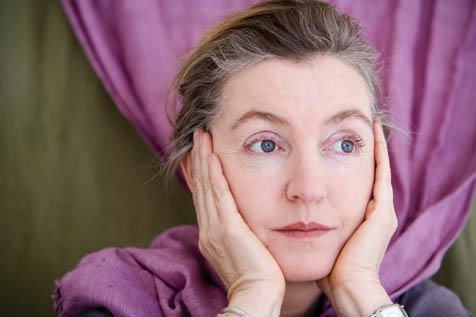
Earlier today I was explaining to a very fit young man that one of the reasons for his difficulties is that he rarely walks, and when he does, he has no rhythm and completely fails to move his arms. It has to do with activating both sides of the brain and improving the flow of blood and energy in the body.
He thought that I was completely daft until I showed him the impact on his anxiety and depression, simply by walking properly. He was stunned. Perhaps we shall have another convert!
“The rhythm of walking generates a kind of rhythm of thinking, and the passage through a landscape echoes or stimulates the passage through a series of thoughts. The creates an odd consonance between internal and external passage, one that suggests that the mind is also a landscape of sorts and that walking is one way to traverse it. A new thought often seems like a feature of the landscape that was there all along, as though thinking were traveling rather than making.”
–Rebecca Solnit (American Writer, 1961-)
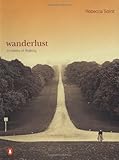
Bringing Back Balance
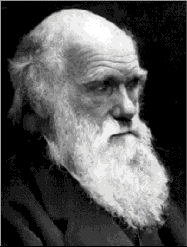
“If I had to live my life again I would have made a rule to read some poetry and listen to some music at least once a week; for perhaps the parts of my brain now atrophied could thus have been kept active through use.”
–Charles Darwin (English Naturalist, 1809-1882)
Goldilocks Light

“There are two kinds of light—the glow that illumines, and the glare that obscures.”
–James Thurber (American Writer, 1894-1961)
Symmetry

“The geometry of the archetypes and the Universal Mind are evident in the principles of symmetry which pervade nature and art. Symmetry shows us a glimpse of the ideal beauty which is reflected in nature, infusing it with order. Symmetry is universal; it can be found everywhere as the broad principle of balance and harmony.”
–Shirley J. Nicholson (American Teacher, Theosophist, Author, Former Chief Editor of Quest Books and Resident Head of the Krotona Community)
“Ancient Wisdom – Modern Insight (Quest Books)” (Shirley J. Nicholson)
Moving Around Your Center
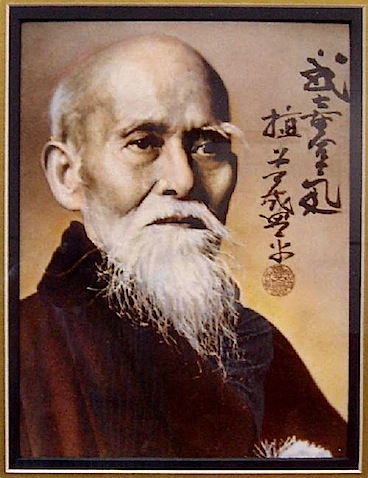
This advice is not just for martial artists: keeping a stable serene center is one of the most important skills that any of us can learn.
“Move like a beam of light: fly like lightning, strike like thunder, whirl in circles around a stable center.”
–Morihei Ueshiba (Japanese Martial Artist and Founder of Aikido, 1883-1969)
What Does The World Owe Us?

I was hearing yet another person tell me that they thought that the world “Owed” them. It reminded of this lovely quip:
“Don’t go around saying the world owes you a living. The world owes you nothing. It was here first.”
–Mark Twain (a.k.a. Samuel Langhorne Clemens, American Humorist, Writer and Lecturer, 1835-1910)
T’ai Ch Ch’uan and Your Feet

One of the worries about getting older is that aging can adversely affect our balance and increases the chance that we can slip and fall. This is even more of a problem in people with loss of sensation in the soles of the feet due to diabetic peripheral neuropathy and other diseases. T’ai Chi Ch’uan has previously been shown to improve balance in healthy elderly adults.
A new study from the Biomedical Engineering Program, Milwaukee School of Engineering, Milwaukee, Wisconsin was just published in the journal Diabetes Technology and Therapeutics.
The aim of the study was to see if T’ai Chi improved both balance and sensory perception in the soles of the feet in healthy elderly adults and elderly adults with diabetes and sensory loss in the feet. Eighteen elderly people with a mean age of 73.1 years were tested for sensation and balance before t’ai chi training and again after 6 months of weekly sessions. Participants were grouped by their initial scores on tests of sensory perception, in order to calculate the effects of t’ai chi on sensory perception.
Plantar (soles of feet) sensation results showed that all the participants showed significant improvement in sensory ability with the 6 months of t’ai chi training. All groups also had a general improvement in all balance measures, with the greatest improvement seen in those subjects with large sensory losses. Hemoglobin A1c measurements – a standard way of estimating control of blood glucose – also decreased as a result of the intervention.
The study was small, but the effectiveness of t’ai chi training as a method of improving plantar sensation and balance in elderly adults with sensory loss, with and without diabetes, was impressive.
Another one of those things that is supposed to be impossible!
Your Brain's Inertial Navigation System

There are many mysteries about the human brain. One is the role of the cerebellum that lies at the back of your head right underneath the cerebral hemispheres. Most students believe that it is only involved in balance and motor coordination, but that does not make much sense: relative to the rest of the brain, humans have the largest cerebellum of any species apart form the dolphin. And there are good reasons for believing that it is involved in the coordination of emotional and social processes, as well as language.
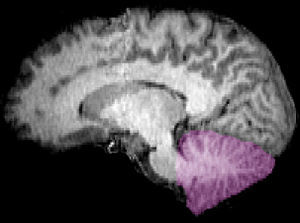
We now learn that it may have yet another function. Colleagues from Washington University School of Medicine in St. Louis report that there is a sophisticated neural computer that is buried deep in the cerebellum, that performs inertial navigation calculations to calculate our precise movement through space.
These calculations are incredibly complex and involve the vestibular system in the inner ear that provides the primary source of input to the brain about the body’s movement and orientation in space. However, the vestibular sensors in the inner ear only give us information about the position of our head position. In addition the vestibular system’s detection of head acceleration cannot distinguish between the effect of movement and that of gravitational force.
Dora Angelaki and her team based their brain studies on the predictions of a theoretical mathematical model. The model proposed that the brain could calculate inertial motion by combining two things:
1. Rotational signals from the semicircular canal in the inner ear with
2. Gravity
Based on previous research, they concentrated their search for the brain’s inertial navigation system on particular types of neurons called Purkinje cells, in a region of the cerebellum known to receive signals from the vestibular system. This region is known as the posterior cerebellar vermis, a narrow, worm-like structure between the brain’s hemispheres. It has been known for two centuries that damage to the cerebellar vermis can produce bizarre neurological problems.
In their experiments, the researchers measured the electrical activity of these Purkinje cells in monkeys as the animals’ heads were maneuvered through a precise series of rotations and accelerations. After analyzing the electrical signals measured from the Purkinje cells during these movements, the researchers concluded that the specialized Purkinje cells were, as predicted, computing earth-referenced motion from head-centered vestibular information.
This is a remarkable finding: the cells are able to make complex deductions based on very little information.
Cells in the brain, particularly cells of the Purkinje type are designed to adapt and learn. So the finding gives yet more credence to the idea that balance, coordination and orientation in space are learnable skills. That will be the topic of another research project.
But for now, the evidence suggests that anything that helps you to practice these skills will likely pay dividends as you get older.
Blueberries and Colon Cancer

I have been delighted to see how many people have read and downloaded my Twelve Tips to Reduce Your Risk of Colon Cancer.
There is some new research that was just presented at the shows tha there is a compound in blueberries called pterostilbene that may help protect against the development of colon cancer.
Researchers from Rutgers University and the US Department of Agriculture presented their findings at the meeting of the American Chemical Society in Chicago.
Pterostilbene is a natural antioxidant that mops up free radicals that may, in excess, trigger the growth of some cancers. Similar antioxidants have already been identified in grapes and red wine. Work in mice suggests that pterostilbene may also lower cholesterol levels. The compound also reduced inflammation and the rate of cell division in the bowel both of which are considered to be cancer risk factors.
Pterostilbene is also found in cranberries, sparkleberries, lingonberries and grapes.
It is an extremely good idea to add blueberries to your diet. Do not overdo it! I worry when people extol the virtues of some super-food or super-drink that is supposed to abolish all of your free radicals. Despite the claims of at least one medical correspondent on Fox New, there is usually no evidence that they do so. And in any case, you do not want to abolish all your free radicals: they are key cancer killers.
You want to balance and modulate the free radicals in your body, and blueberries, together with four other portions of fruit and vegetables a day are one excellent way of doing so.








